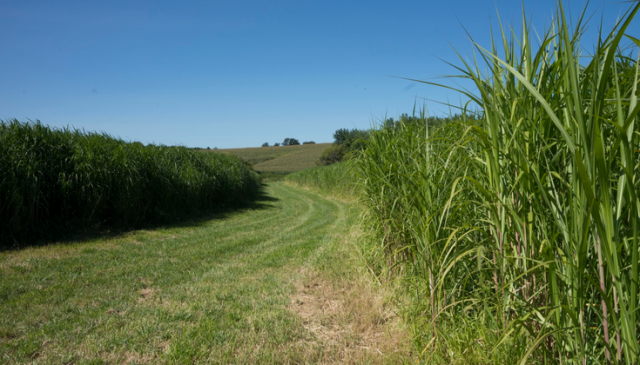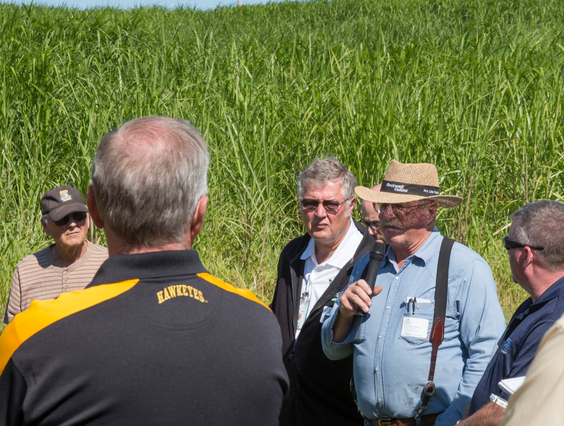BTN.com staff, BTN.com staff, September 18, 2015
Throughout the state of Iowa, something interesting has been happening with farms over the past few years - they?re disappearing in the hundreds. According to the U.S. Department of Agriculture, the number of farms fell by 500 in 2014 to a total of 88,000.
This trend has leading minds in the Hawkeye state asking: How can we keep farmers in business? And the University of Iowa is working on one possible solution that has a real tongue-twister of a name: miscanthus.
 Miscanthus is a tall-standing perennial grass that?s grown in stature - both literally and figuratively - on Iowa?s campus. The university is cultivating this environmentally friendly wonder crop as part of its new energy initiative, the Biomass Fuel Project.
Miscanthus is a tall-standing perennial grass that?s grown in stature - both literally and figuratively - on Iowa?s campus. The university is cultivating this environmentally friendly wonder crop as part of its new energy initiative, the Biomass Fuel Project.
?We?re looking at miscanthus for energy production,? said Liz Christiansen, a coordinator of this project and director of the university?s Office of Sustainability. ?We think this is a really powerful example of how we can solve a problem using sustainability as framework. We are applying economics, social and environmental interest to achieve long-term solutions to major issues such as renewable energy production.?
A sterile hybrid of the crop, which can grow 12-14 feet high, can be burned to provide electricity, heating and cooling on campus. Miscanthus is more notable for its unseen qualities than its visual ones, Christiansen said.
?This would not be considered a decorative plant that one would consider for the background,? she explained.
Already popular in the European Union as a commercial energy crop, miscanthus serves as a potent source of heat and electricity. The Biomass Fuel Project, operated in collaboration with Iowa State University, aims to fulfill some of the school?s energy needs by using miscanthus and other natural products - including oat hulls and wood chips - as energy sources.
Christiansen said the University of Iowa has a goal of getting 40 percent of its energy needs from renewable sources by 2020.
?There are people benefits, too,? Christiansen said. ?We know the number of Iowa farms is decreasing, and we?re concerned about the steady de-population of Iowa?s rural areas and the traditional, rural-based agricultural state. [The project] offers individual producers a means of diversifying their revenue by growing a fuel crop for the University of Iowa.?
The Biomass Fuel Project currently has four private growers of miscanthus on sites in Cedar Rapids, the Eastern Iowa Airport and the University of Iowa campus. According to Ingrid Anderson, an environmental compliance specialist with the university?s Utilities & Energy Management, there are 350 acres of miscanthus in production.
?We planted this spring, and we?re looking to double acreage by the time we plant next year,? she said.
Anderson credited Emily Heaton, an Iowa State assistant professor with the school?s Department of Agronomy, with supplying much-needed research to help get the biomass initiative off the ground at Iowa. In 2014, the University of Iowa established its second pilot plot of miscanthus before expanding the crop?s growth locally.
[btn-post-package]The Biomass Fuel Project received a 2015 Governor?s Environmental Excellence Award-Special Recognition in Energy. Moreover, the university hosted something of an open-house in late August at multiple sites to introduce farmers, federal and state lawmakers, and others to the benefits of locally grown miscanthus. Anderson hopes efforts like these will help build a groundswell of support for a resource that offers multiple benefits for the state.
?This is one way to maintain healthy, fertile farm ground, improve water quality and reduce erosion,? she said. ?We think it?s a good opportunity for renewable fuels, [and] provides environmental benefits to the Iowa landscape and provides economic value to Iowa farmers.?
By Tony Moton







